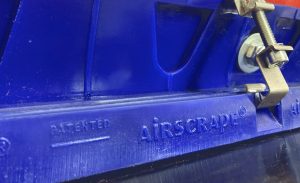Known best for its customised heating, cooling and ventilation (HVAC) systems, Booyco Engineering has embraced technology to meet global standards. MD Brenton Spies explains that by leveraging powerful simulation software, the company is able to significantly shorten product prototype development time.
“In the past, the conventional practice in product development was to build a physical prototype and then put it through a series of tests,” says Spies. “Often, these tests would lead to the rebuilding of new prototypes – to progressively remove the weaknesses we discovered by testing.”
The company has invested over R10-million in specialised Computational Fluid Dynamics (CFD) and Finite Element Analysis (FEA) software. These are used for modelling factors such as the strength of components, structure-borne vibration, and airflow and heat distribution inside its HVACs and conditioned spaces.
“These resources allow us to run simulations and iron out most of the issues before we even build a prototype,” he says. “The simulations cut down significantly on the time taken by the traditional ‘trial and error’ route in developing solutions for customers, allowing us to get product to the customer faster, saving both time and money.”
This capacity has led to Booyco Engineering becoming an approved supplier to global rail OEMs. Grant Miller, executive director at Booyco Engineering, explains how the company became the first South African supplier to locally manufacture a cooling tower for electric locomotives. Working within the customer’s demanding framework of specifications and standards, the value added by the software was vital to the successful outcome.
“We developed our initial prototype design, which was then systematically verified against the customer specifications using CFD or FEA simulations to ensure the design was producing the expected results,” says Miller.
Only then was a physical test conducted. This test, he says, was almost a formality – to verify the calculations and simulations.
“For the cooling tower we designed and built, we physically vibration-tested the components but not the actual structure,” he says. “This was because the structure weighed about a ton and a half. But we could conduct a detailed FEA to verify the structure, which satisfied the customer’s requirements.”
This approach is proved by the fact that this cooling tower has successfully operated on an electric locomotive since 2016 with no structural failures.





